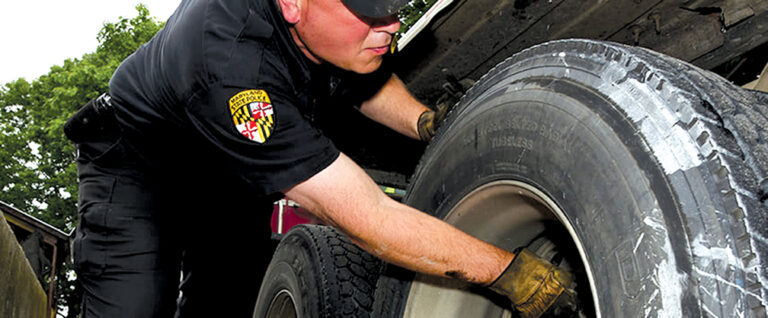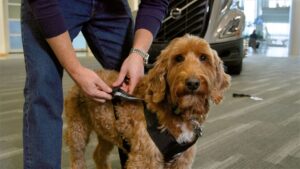Drivers are often surprised when a DOT roadside inspection turns up one or more issues, especially if those issues are of the shut down variety.
In the majority of cases, however, discrepancies on an inspection end up being relatively simple issues that could easily have been taken care of before the inspection … if only someone had checked.
Violations can be costly in terms of fines, as well as lost time, late deliveries and missed loads. The cost of repairs on the road, such as a service call to the parking lot of a scale house, can be very high.
There are multiple levels of inspections performed on commercial vehicles, but the vast majority fall into Levels 1, 2 and 3.
A Level 3 inspection deals with the driver and compliance with the rules. The inspector will look at the driver’s CDL to determine that it’s valid and is appropriate for the vehicle driven and the cargo being hauled. All too often, drivers are cited for not having their CDL with them or for driving on a CDL that has been suspended for issues like child support payments. Expired CDLs aren’t uncommon, either.
The driver is also required to have a medical examiner’s certificate. Usually this is on file with the state that issued the CDL, but some states require the driver to carry a copy. Some drivers have difficulty keeping track of the expiration date on their certificate and fail to get a new one in time.
The inspector will also look at the driver’s record of duty status, either through the electronic logging device (ELD) or by inspecting logbooks, if the driver is authorized to use them.
The permit book falls into this inspection level, too. Authority, registration, IFTA authorization and other documents will be inspected, as well as any permits required in the state in which the inspection is conducted. Proof of insurance will also be checked. Drivers who never look in their permit books are often surprised to find they are found lacking.
The inspector may also check for seatbelt use and look for signs of drug use or alcohol impairment.
Passing a Level 3 inspection is mostly a matter of making sure all documents are up to date and in the driver’s possession.
A Level 2 inspection includes everything in the Level 3 check — plus a “walk-around” inspection of the vehicle. Most of what the inspector looks at in a Level 2 should have already been inspected by the driver in that day’s pre-trip inspection. Tires and wheels are one focus of the inspector, who looks for flat or underinflated tires, loose lug nuts, broken rims and other obvious problems. A common violation is “chafing” air lines, either behind the tractor or underneath the trailer. Obvious issues, such as air leaks, inoperative lighting and fifth-wheel attachments, are easy for inspectors to check.
All too often, pre-trip inspections turn out to be paper exercises that don’t identify issues often found by inspectors. Of course, it’s possible for a tire to lose air or even go flat without the driver’s knowledge, but routine inspections will catch many issues that inspectors end up writing up.
The Level 1 inspection is the most comprehensive, featuring a complete vehicle inspection around and under the unit, along with everything included in the Level 2 inspection. This is where the inspector literally gets down to the nuts and bolts. Brakes, steering, suspension, fifth-wheel (if equipped) — it’s all checked. You may be asked to participate in the inspection by turning lights on and off, applying the brake pedal or other actions as directed.
Some inspectors will conduct the inspection and hand you the form, while others will take the time to point out each violation and explain why they wrote it up.
While many drivers consider inspections to be the heavy-handed application of regulations by law enforcement agencies, the reality is generally quite different. The inspection criteria are developed by the Commercial Vehicle Safety Alliance (CVSA), which is a partnership between government agencies, manufacturers and trucking community members. At regularly scheduled meetings, experts discuss and decide the criteria used to determine if a part, for example, a slack adjuster on a braking system, is within specs, out of spec but not shutdown-worthy or calls for immediate shutdown.
Passing a DOT inspection is much more likely if you perform regular pre-trip inspections and quickly having any discrepancies you find repaired. Supplement these inspections with periodic walk-arounds as you stop for breaks or other reasons. A quick check of lights and tires and help you identify issues early, rather than waiting for the next pre-trip.
Checking your permit book — or bringing it to the office of the carrier you drive for periodically for review — helps you stay up to date. Keeping it organized by replacing expired permits with new ones and keeping it neat and orderly helps.
Keep your load paperwork together in one place, and keep it neat. If you haul hazmat, the hazmat paperwork must be on top or tabbed for quick identification, and it must be left on the driver’s seat or in a door pouch when you exit the vehicle.
Stay informed. Often, inspection initiatives are focused on a particular item such as brakes, and many are announced in advance. While this doesn’t mean you can ignore other systems or items, it can help make sure you address what you know inspectors will be looking for.
Finally, your attitude matters. The inspector is doing a job, just as you are, and that person in uniform is also a human being. Expressing your frustration at being stopped, arguing about violations and generally being difficult won’t help you pass. Being polite and respectful can make a difference and marks you as a professional. Arguing with the results won’t get you anywhere, but politely asking for clarification might.
If you know your vehicle is mechanically sound and your paperwork is in order before you start your day, your chances of passing a DOT inspection increase and your day just might go better.
Cliff Abbott is an experienced commercial vehicle driver and owner-operator who still holds a CDL in his home state of Alabama. In nearly 40 years in trucking, he’s been an instructor and trainer and has managed safety and recruiting operations for several carriers. Having never lost his love of the road, Cliff has written a book and hundreds of songs and has been writing for The Trucker for more than a decade.
















It was interesting when you mentioned that a level 3 DOT inspection deals with compliance with rules. As far as I know, some states have a weight limit that trucks can’t exceed. I think states use weight stations positioned around state lines to prevent violations. http://www.carlsonscaleshop.com/